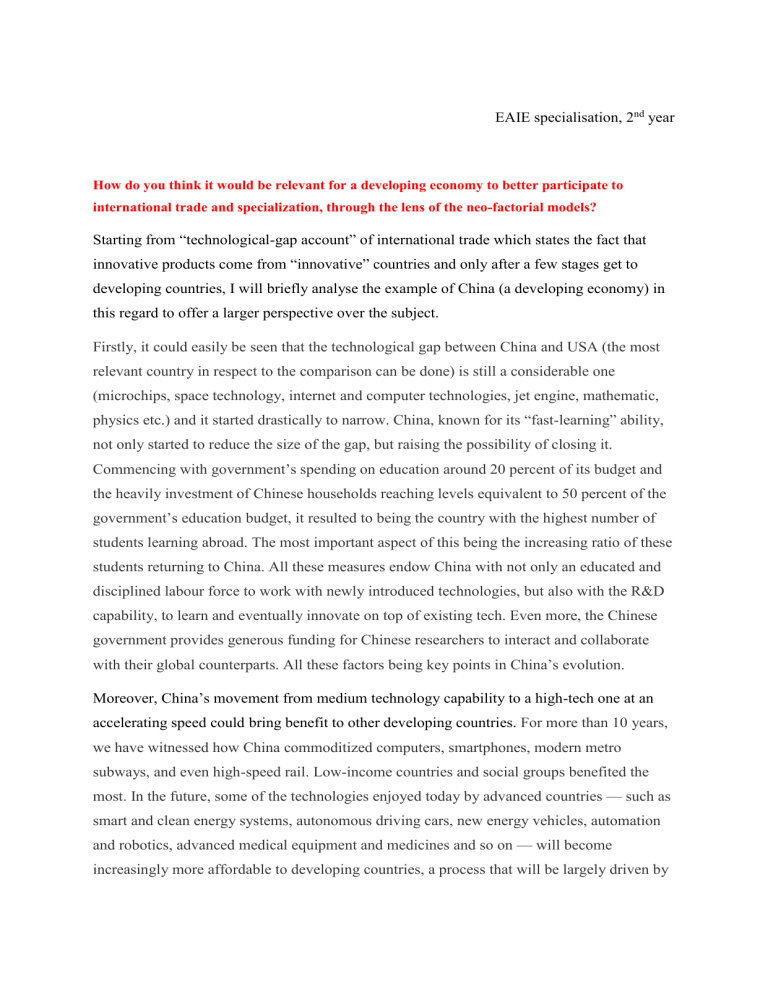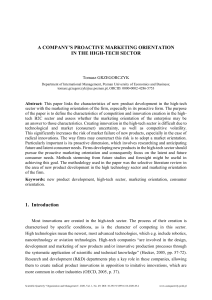
EAIE specialisation, 2nd year How do you think it would be relevant for a developing economy to better participate to international trade and specialization, through the lens of the neo-factorial models? Starting from “technological-gap account” of international trade which states the fact that innovative products come from “innovative” countries and only after a few stages get to developing countries, I will briefly analyse the example of China (a developing economy) in this regard to offer a larger perspective over the subject. Firstly, it could easily be seen that the technological gap between China and USA (the most relevant country in respect to the comparison can be done) is still a considerable one (microchips, space technology, internet and computer technologies, jet engine, mathematic, physics etc.) and it started drastically to narrow. China, known for its “fast-learning” ability, not only started to reduce the size of the gap, but raising the possibility of closing it. Commencing with government’s spending on education around 20 percent of its budget and the heavily investment of Chinese households reaching levels equivalent to 50 percent of the government’s education budget, it resulted to being the country with the highest number of students learning abroad. The most important aspect of this being the increasing ratio of these students returning to China. All these measures endow China with not only an educated and disciplined labour force to work with newly introduced technologies, but also with the R&D capability, to learn and eventually innovate on top of existing tech. Even more, the Chinese government provides generous funding for Chinese researchers to interact and collaborate with their global counterparts. All these factors being key points in China’s evolution. Moreover, China’s movement from medium technology capability to a high-tech one at an accelerating speed could bring benefit to other developing countries. For more than 10 years, we have witnessed how China commoditized computers, smartphones, modern metro subways, and even high-speed rail. Low-income countries and social groups benefited the most. In the future, some of the technologies enjoyed today by advanced countries — such as smart and clean energy systems, autonomous driving cars, new energy vehicles, automation and robotics, advanced medical equipment and medicines and so on — will become increasingly more affordable to developing countries, a process that will be largely driven by China. This way, China makes a huge engagement in international trade, alongside other emerging nations which will probably develop strong international relations. However, it is not surely known that China will become a global leader in innovation so it can replace today’s advanced economies in trading internationally. But with these perspectives and well-educated population, China will possibly become a true innovator in major high-tech fields soon enough, due to its in dept-depth understanding of the international trade and neo-factorial model.






